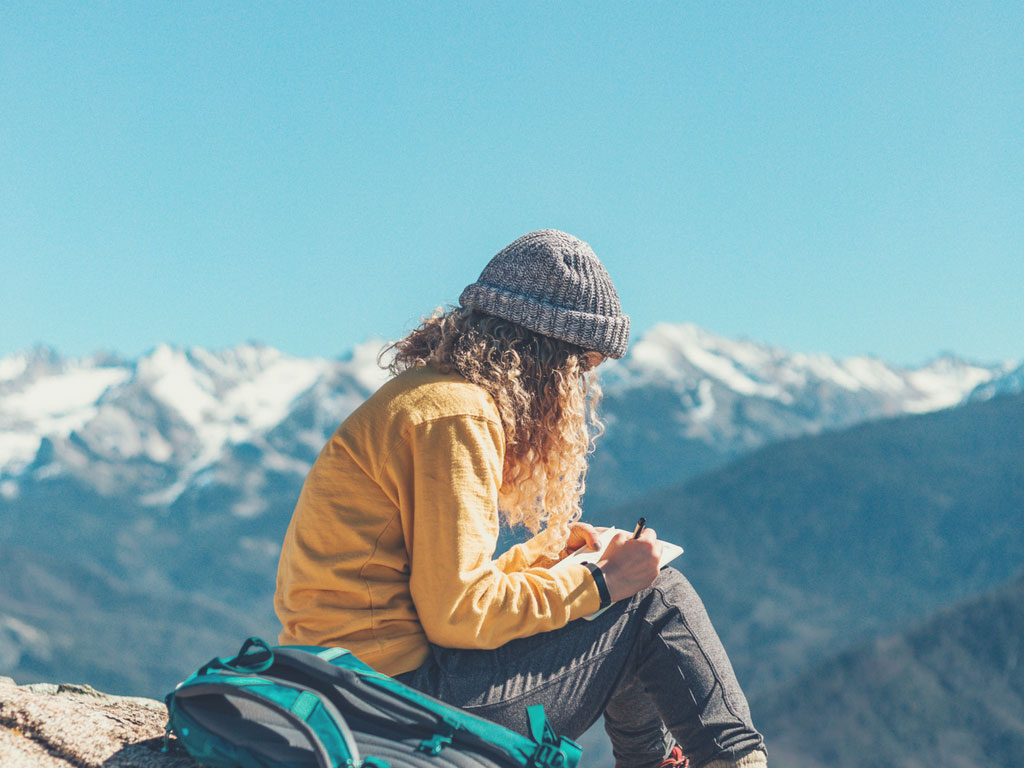Picture it like this, you find yourself captured amidst the serene hills. Gazing through the ant-sized city lines and walking over the creeks of broken branches. Breathing the untouched air and listening to the sound of silence. All of a sudden you are in the rush of a next trek or a ride to another station you had planned, and you leave all of that tranquility behind for the chase.
We all love a little vacation. Especially with the pandemic and being home bound, it has seemingly become even more important for our mental health to seek a get away. While the international flights and travel remains conditioned, domestic/City-border travel has opened us to more possibilities.
When we make an escape for a month and probably indulge in home-grown experiences shared with us by the localities, we tend to indulge more in an experience. However, a 10-day trip to Europe lands us in four nearby countries, and we come back home tired—filled with joy, but tired. And the carbon footprint? Not less than 10 tonnes per person. However, a more sustainable and meaningful approach—slow travel, what you just pictured—has been picking up steam among travelers across the world.
What is slow travel?
“An antithesis to mass tourism, slow travel is an opportunity to re-calibrate the way we travel. Slow travel is intentional, immersive and experience-oriented, embodying #TravelDeeper”. It is a time nurtured experience that breaks us off the dependency over chase and overcoming all together, and truly enhalling every experience at a time. It is transformational; we look to forge meaningful connections with the destinations we travel to and the strangers we meet on our journey, while rediscovering ourselves.
The idea behind slow travel is to respect the local cultures and staying mindful about the environment while seeking soulful nirvana out of it.
How is it relevant in today’s times?
With the entire travel experience upended thanks to the pandemic, the future of the industry is up in the air. With the pandemic, we often wonder “Whether we should be travelling or not?”
The norm may witness a change, and people may embrace the attributes of slow travel, even if it’s for a while, in huge numbers. The whole travel ecosystem has received a shock—and needs a shot in the arm, and support.
The way we were travelling previously was unsustainable, escapist and mechanical, with regions suffering from over-tourism, climate change and destination fatigue. In the near future, opportunities for travel outside the country will decrease and destinations will be more cautious of over-tourism. Slow travel is more than ever critical to help support communities, local artisans and craftsmen and smaller boutique properties dependent on tourism.
What to keep in mind if you’re planning to travel slow?
Drop the urgency and pace: Travel less frequently, not because there is not much to explore in the world but because when you do, make sure you experience all of a place entirely. Don’t chase and run investing your pocket, energy and holidays in puzzled fragments.
Try and choose destinations and times of the year which are off-season so as to not burden the place already. You also get to visit the place while it is more to you and silent.
Take the initiative of supporting grassroot experiences that connect the place with the people, supporting their crafts and local traditions by buying artwork, local handicrafts, food and handloom and savoring local experiences.
Try ‘voluntourism’, learn permaculture, set off for a meditative retreat, go for a yoga camp or check into an Ayurveda center. Make travel about an inner journey, not an outward holiday only. Use your hard-earned money and holiday for a complete reboot for your body, mind and soul.
Discover your own backyard. Road trips and local trips around the country will explode. Make the most of it.

